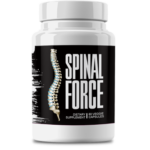This Village-Made Chinese Pain Reliever Eliminates Back And Joint Pain!
SI Pain Management: Tips from Medical Professionals

Understanding SI Pain: A Comprehensive Overview
What is SI Pain?
The sacroiliac (SI) joint connects the spine to the pelvis, playing a crucial role in your body's mobility and stability. SI pain stems from inflammation or dysfunction in this joint, often resulting in discomfort in the lower back, buttocks, or thighs. Understanding SI pain is the first step toward effective management. This condition can significantly impact daily activities, making it essential to recognize the symptoms and seek appropriate care. If left untreated, SI pain can lead to chronic issues, affecting your quality of life and overall well-being.
Common Causes of SI Pain
SI pain can be triggered by various factors, including injury, arthritis, or pregnancy. Trauma from falls or car accidents often results in SI joint dysfunction. Additionally, conditions like ankylosing spondylitis or osteoarthritis can lead to inflammation and discomfort in the SI joint. Pregnancy-induced SI pain is also common due to hormonal changes and increased pelvic joint mobility. Identifying the root cause is crucial for tailoring appropriate treatment strategies. By understanding these causes, you can better prevent and manage SI pain, ensuring a healthier and more active lifestyle.
Symptoms and Diagnosis of SI Pain
Symptoms of SI pain include lower back pain, buttock pain, and sometimes pain radiating to the legs. Diagnosis typically involves a comprehensive physical examination and medical history review. Imaging tests like X-rays, MRIs, or CT scans can help identify structural issues. Additionally, diagnostic injections directly into the SI joint can confirm the source of pain. Early diagnosis is vital for effective treatment, preventing the pain from becoming chronic. If you experience persistent lower back discomfort, consulting a healthcare professional can help determine if SI pain is the underlying cause.
Medical Professionals’ Insights on SI Pain Management
Role of Orthopedic Specialists
Orthopedic specialists play a critical role in diagnosing and treating SI pain. These experts focus on the musculoskeletal system, offering treatments that range from physical therapy to surgical interventions. They conduct thorough assessments to determine the best course of action. Orthopedic doctors often collaborate with other healthcare providers to ensure a comprehensive treatment plan. Their expertise is invaluable in managing both acute and chronic SI pain, helping patients regain mobility and reduce discomfort. Consulting an orthopedic specialist can provide you with targeted strategies for managing SI pain effectively.
Insights from Physical Therapists
Physical therapists are essential in the management of SI pain, providing personalized exercise regimens to strengthen the muscles surrounding the SI joint. They focus on improving flexibility, stability, and overall function. Through tailored physical therapy sessions, patients can achieve significant pain relief and enhanced mobility. These professionals also educate patients on proper body mechanics and posture to prevent future flare-ups. Regular physical therapy can be a cornerstone of non-surgical SI pain management, offering a holistic approach to improving quality of life.
Pain Management Strategies by Rheumatologists
Rheumatologists specialize in treating arthritis and other inflammatory conditions that can affect the SI joint. They offer various pain management strategies, including medications and injections. Rheumatologists also provide guidance on lifestyle modifications to reduce inflammation and pain. Their expertise in autoimmune and inflammatory diseases is crucial for patients whose SI pain stems from conditions like ankylosing spondylitis or rheumatoid arthritis. By working with rheumatologists, patients can access a range of treatments designed to manage pain and improve joint function.
Non-Surgical Treatments for SI Pain
Physical Therapy Exercises
Physical therapy exercises are a cornerstone of non-surgical SI pain management. These exercises focus on strengthening the core and pelvic muscles to provide better support for the SI joint. Common exercises include pelvic tilts, bridges, and gentle stretches like the knee-to-chest stretch. Consistent physical therapy can improve mobility, reduce pain, and prevent future episodes of SI pain. A physical therapist can design a customized exercise program tailored to your specific needs, ensuring optimal results. Engaging in regular physical therapy can significantly enhance your overall quality of life.
Chiropractic Care
Chiropractic care offers a hands-on approach to managing SI pain. Chiropractors use spinal adjustments and manipulations to realign the SI joint, reducing discomfort and improving function. This non-invasive treatment can provide immediate relief for some patients. Chiropractors also offer guidance on exercises and lifestyle changes to support long-term SI joint health. Regular chiropractic sessions can be an effective component of a comprehensive SI pain management plan, promoting overall well-being and reducing the risk of chronic pain.
Acupuncture and Alternative Therapies
Acupuncture and other alternative therapies can be beneficial for managing SI pain. Acupuncture involves inserting thin needles into specific points on the body to stimulate healing and pain relief. Other alternative treatments, such as massage therapy and yoga, can also help alleviate SI pain by improving flexibility and reducing muscle tension. These therapies can be used alongside conventional treatments to enhance overall pain management. Exploring alternative therapies can provide additional options for those seeking holistic approaches to SI pain relief.
Medications for SI Pain Relief
Over-the-Counter Pain Relievers
Over-the-counter (OTC) pain relievers, such as ibuprofen and acetaminophen, are commonly used to manage SI pain. These medications can help reduce inflammation and alleviate discomfort. While OTC pain relievers are generally safe for short-term use, it is essential to follow dosage instructions and consult a healthcare professional if pain persists. Combining OTC medications with other treatments, like physical therapy, can provide more comprehensive pain relief. Always discuss any new medication with your doctor to ensure it is appropriate for your specific condition.
Prescription Medications
For more severe SI pain, prescription medications may be necessary. These can include stronger pain relievers, muscle relaxants, and anti-inflammatory drugs. Prescription medications are typically used when OTC options are insufficient. Your healthcare provider will determine the best medication based on your symptoms and medical history. It is crucial to follow your doctor's instructions and report any side effects. Prescription medications can be an essential part of a multi-faceted approach to managing SI pain effectively.
Topical Treatments
Topical treatments, such as creams and patches, can provide localized relief for SI pain. These products often contain ingredients like menthol, capsaicin, or lidocaine, which help numb the pain and reduce inflammation. Topical treatments can be a convenient option for those seeking immediate, targeted relief without systemic side effects. Applying these treatments directly to the affected area can offer quick and effective pain management. Combining topical treatments with other therapies can enhance overall pain relief and improve your daily comfort.
Surgical Options for SI Pain
Minimally Invasive Procedures
Minimally invasive procedures, such as SI joint injections or radiofrequency ablation, can provide significant relief for SI pain. These treatments involve using imaging guidance to precisely target the source of pain. SI joint injections deliver corticosteroids directly into the joint to reduce inflammation, while radiofrequency ablation uses heat to disrupt pain signals. Minimally invasive procedures offer a less risky alternative to traditional surgery, with shorter recovery times and fewer complications. Consulting with a specialist can help determine if these options are suitable for your condition.
Traditional Surgical Interventions
In cases where non-surgical treatments and minimally invasive procedures are ineffective, traditional surgical interventions may be necessary. SI joint fusion is a common surgical option that involves permanently joining the bones of the SI joint to reduce pain and improve stability. While surgery carries more risks and requires a longer recovery period, it can provide lasting relief for severe SI pain. Discussing the potential benefits and risks with your healthcare provider is crucial for making an informed decision about surgical intervention.
Lifestyle Modifications to Alleviate SI Pain
Importance of Exercise and Stretching
Regular exercise and stretching are vital for managing SI pain. Strengthening the core and pelvic muscles can provide better support for the SI joint, reducing pain and improving function. Incorporating low-impact activities, such as walking, swimming, or yoga, can enhance flexibility and overall fitness. Stretching exercises, like hamstring and hip flexor stretches, can alleviate tension and improve joint mobility. A consistent exercise routine tailored to your needs can significantly reduce SI pain and enhance your quality of life. Consulting a physical therapist can help you develop an effective exercise plan.
Proper Posture and Ergonomics
Maintaining proper posture and ergonomics is crucial for preventing and managing SI pain. Poor posture can strain the SI joint, leading to discomfort and pain. Ensuring that your workspace is ergonomically designed can help reduce stress on the SI joint. This includes using an adjustable chair, maintaining a neutral spine position, and taking regular breaks to move and stretch. Being mindful of your posture during daily activities, such as sitting, standing, and lifting, can also prevent SI pain. Implementing these changes can contribute to long-term joint health and pain relief.
Diet and Nutrition Tips
A balanced diet and proper nutrition can play a role in managing SI pain. Consuming anti-inflammatory foods, such as fruits, vegetables, and omega-3 fatty acids, can help reduce inflammation and pain. Staying hydrated and maintaining a healthy weight can also alleviate stress on the SI joint. Avoiding processed foods and excessive sugar can further support joint health. Consulting with a nutritionist can provide personalized dietary recommendations to complement your overall SI pain management plan. Adopting healthy eating habits can contribute to long-term pain relief and improved well-being.
Coping Strategies and Support Systems
Mental Health and Pain Management
Mental health plays a significant role in managing chronic SI pain. Stress and anxiety can exacerbate pain, making it essential to address emotional well-being. Techniques such as cognitive-behavioral therapy (CBT), meditation, and mindfulness can help manage stress and improve pain perception. Seeking support from mental health professionals can provide strategies to cope with pain and enhance overall quality of life. Integrating mental health care into your pain management plan can offer a holistic approach to managing SI pain effectively.
Support Groups and Community Resources
Joining support groups and utilizing community resources can provide valuable assistance for those managing SI pain. Support groups offer a platform to share experiences, gain insights, and receive emotional support from others facing similar challenges. Community resources, such as pain management clinics and wellness centers, can provide additional tools and therapies. Engaging with these networks can reduce feelings of isolation and empower you with knowledge and support. Building a strong support system is crucial for navigating the complexities of chronic pain management.
Self-care Techniques and Mindfulness
Incorporating self-care techniques and mindfulness practices into your daily routine can help manage SI pain. Practices such as deep breathing, progressive muscle relaxation, and guided imagery can reduce tension and promote relaxation. Engaging in activities that bring joy and relaxation, such as hobbies or spending time in nature, can also improve mental and physical well-being. Mindfulness practices, including yoga and meditation, can enhance body awareness and pain management. Prioritizing self-care and mindfulness can contribute to a comprehensive approach to managing SI pain.
Future Trends in SI Pain Management
Advances in Medical Research
Ongoing medical research continues to explore new treatments and therapies for SI pain. Advances in imaging technology, regenerative medicine, and pain relief methods hold promise for more effective and less invasive treatments. Research into the underlying mechanisms of SI pain can lead to better diagnostic tools and targeted therapies. Staying informed about the latest developments in medical research can provide hope and options for those managing SI pain. Collaborating with healthcare providers to explore new treatments can enhance your pain management strategy.
Emerging Technologies
Emerging technologies are revolutionizing the management of SI pain. Innovations such as wearable devices, telemedicine, and virtual reality therapy offer new ways to monitor and treat pain. Wearable devices can track movement and provide real-time feedback, helping to improve posture and prevent pain. Telemedicine allows for remote consultations and access to specialized care. Virtual reality therapy offers immersive experiences to distract from pain and promote relaxation. Embracing these technologies can provide additional tools for managing SI pain and improving overall quality of life.








